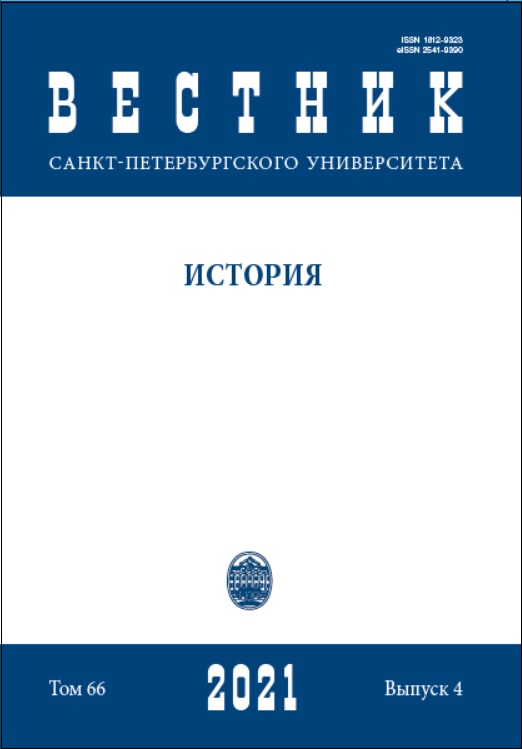To the characteristic of flint processing in Donbass during the Chalcolithic
DOI:
https://doi.org/10.21638/spbu02.2021.415Abstract
In the Neolithic, the Donbass was finally formed as one of prominent European centers for extraction and primary processing of raw flint. The formation of such a large economic area with its particular production specialization is based on the mineral wealth of the region, plentiful deposits of high-quality Upper Cretaceous flints. The most complex organized sites of mining and specialised workshops on primary flint splitting are dated back to this period. In the field of mining in the Southern Donbas of the time, there are adits for flint extraction in the thickness of limestone (Shirokoie). The mine workings were made in the form of wide horizontal chambers along the slope with separate entrances and transport and ventilation apertures. The mining was carried out with horn tools and adzes with metal wedge-shaped inserts. In the Chalcolithic, workshops for production of bifaces (Krasnoie), a specialized settlement of flint craftsmen (Vasilyevskaia Pustosh) appear in the North-Western Donbass. These workshops used a variety of techniques for primary splitting and making of stone tools that have a distinct cultural context. For the production of plates, large blanks of lithic cores with one platform and two longitudinal edges with two-sided processing that converge at the base were used. The most complicated technologies for lithic cores splitting and tools processing are characteristic of the so-called Novodanilovsky cultural complex. The article contributes to the series of publications on the development of the Donetsk center for mining and primary processing of flint in the Stone Age.
Keywords:
Donbas, Chalcolithic, raw materials strategies, workshops, adits for flint mining, lithic cores
Downloads
Downloads
Published
How to Cite
Issue
Section
License
Articles of "Vestnik of Saint Petersburg University. History" are open access distributed under the terms of the License Agreement with Saint Petersburg State University, which permits to the authors unrestricted distribution and self-archiving free of charge.





